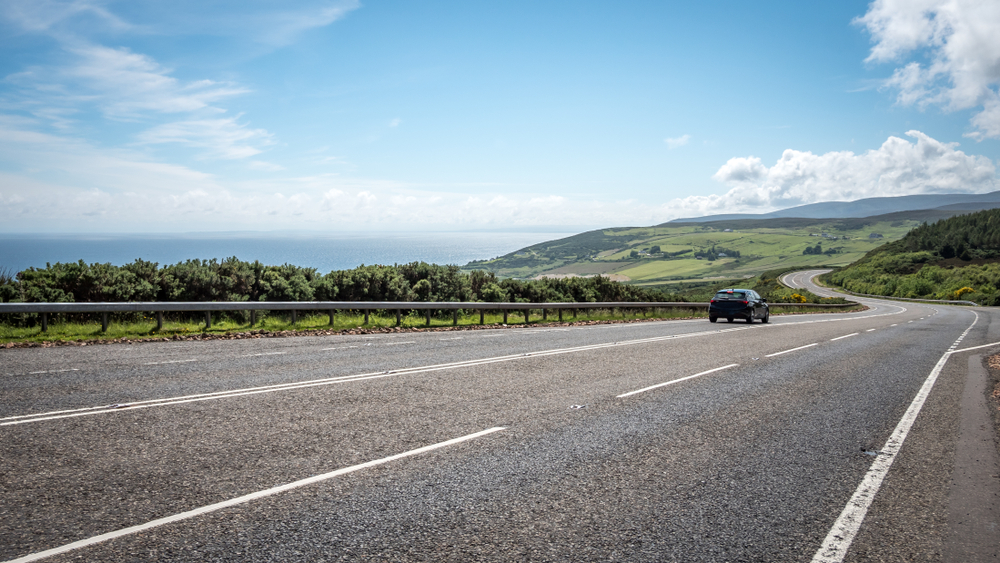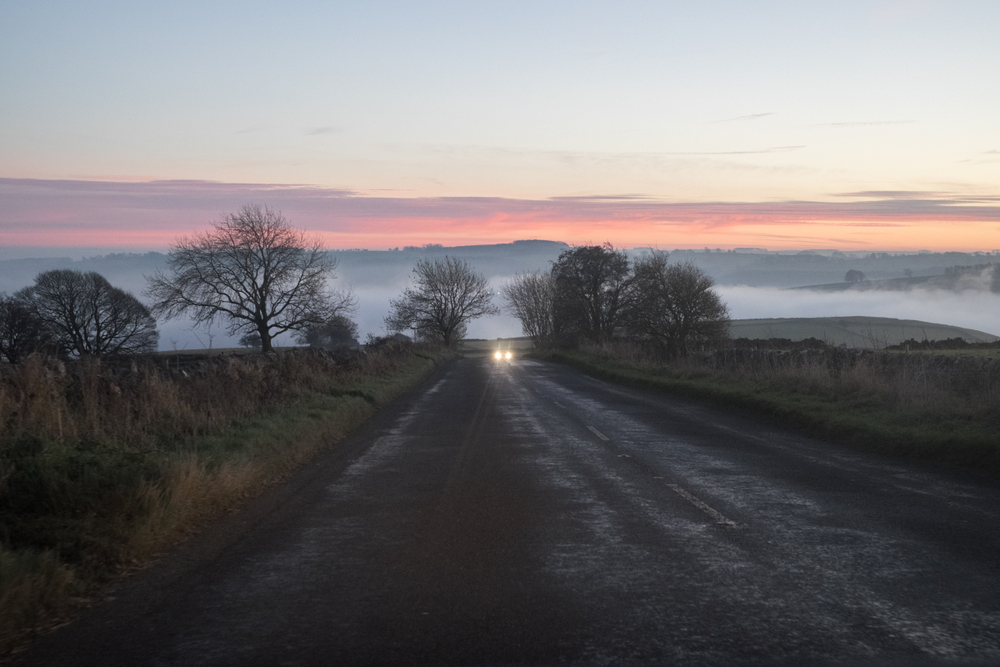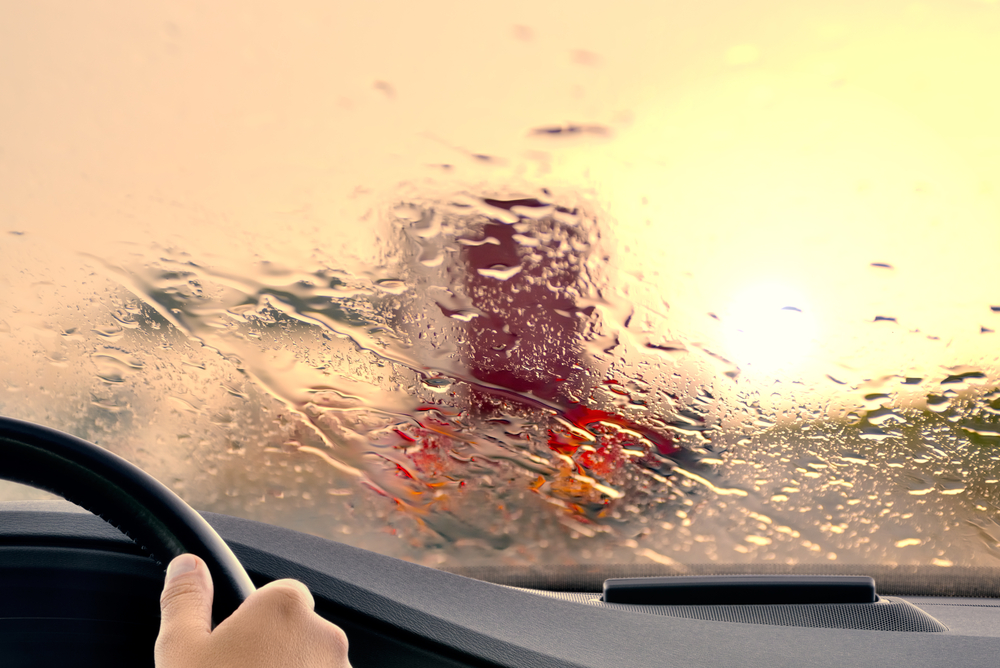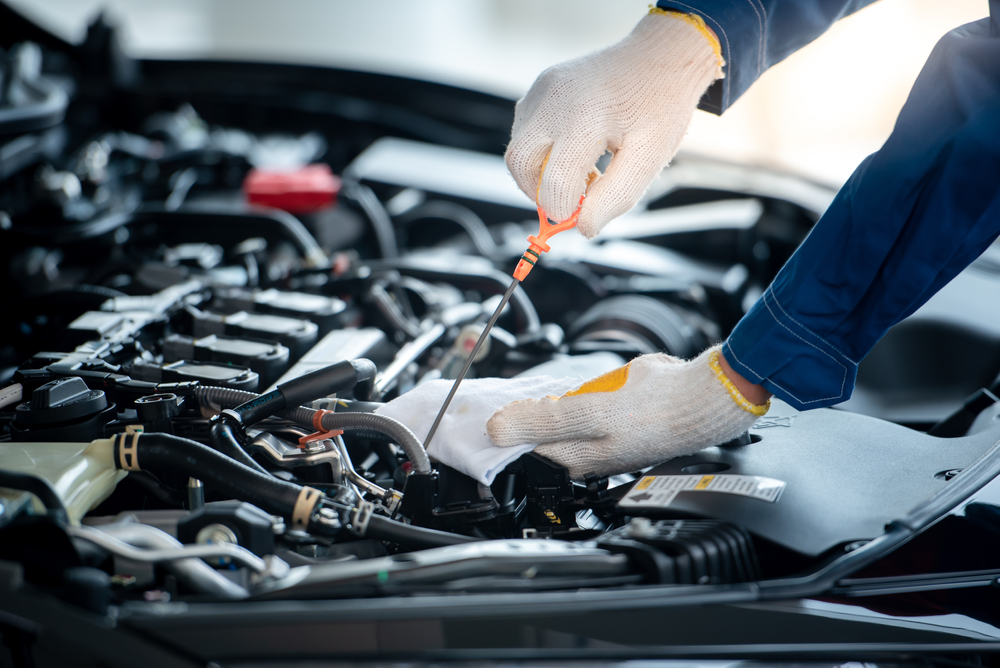Passing your driving test is a huge milestone. Congratulations! As a newly qualified driver, you’re probably excited to hit the road solo for the first time. However, even for the most naturally gifted drivers, the first 12 months of driving come with heightened risks, so it’s important to stay safety-conscious and take extra precautions. Statistics show that about one in five new drivers ends up crashing within their first year of driving. In fact, over 1,500 young drivers are killed or seriously injured on UK roads every year, a sobering reminder that youth and inexperience can be a dangerous combination on the road.
The good news is that by understanding the risks and following some smart tips, from defensive driving and avoiding distractions to maintaining your car and choosing the right insurance, you can greatly improve your safety and confidence. This guide will walk you through practical advice to help you get through that vulnerable first year as safely as possible, so you can enjoy your new independence with peace of mind.
Being a new driver in the UK is exciting but also challenging. Young and inexperienced drivers are at significantly higher risk of accidents than older, experienced motorists. Despite making up only around 7% of UK licence holders, drivers aged 17–24 are involved in about 16% of fatal and serious crashes.
Why is this the case? A big factor is simply a lack of experience; you’ve demonstrated the skills to pass the test, but real-world driving throws constant new situations at you. It takes time to develop keen hazard perception and reflexes. Research shows young drivers have less ability to spot hazards in time and are slower to react than experienced drivers. None of this is your fault. Being able to see driving situations unfold, much of which takes place on a subconscious level, can take years.
Youthful traits can also contribute: teenagers and young adults are more prone to risk-taking and overconfidence (for example, underestimating dangers, speeding, or overtaking when it isn’t safe). Peer pressure is another issue; showing off to friends or just having a bit of fun, heading off to a party, or whatever you’re doing, can lead to poor decisions.
This can impact drivers of all ages….
It’s also been found that newly qualified drivers with a car full of same-age passengers are up to four times more likely to be in a fatal crash compared to driving alone. The bottom line is that new drivers face a perfect storm of inexperience and youthful bravado that elevates crash risk. Recognising these risk factors is the first step toward mitigating them. By being aware and making deliberate, safe choices, you can beat the odds and avoid becoming another statistic.

Defensive/Advanced Driving:
One of the best ways to stay safe is to practice defensive/advanced driving, in other words, drive proactively and cautiously to anticipate problems before they happen. As the Highway Code notes, even after passing your test, you still lack experience and need to keep improving your skills. This means always staying alert and thinking ahead. Here are some defensive driving tips for new drivers:
Anticipate hazards: Continuously scan the road ahead and your mirrors for potential dangers, a car merging, a cyclist, or a ball rolling into the street (with a child likely behind it). If you expect the unexpected, you’ll have more time to react. For example, slow down approaching junctions or bends where your view is limited, in case there’s a hazard just out of sight.
Maintain a safe distance: Keep plenty of space between your car and the vehicle in front. A good rule is the two-second rule (at least a two-second gap in dry weather, doubling to four or more in wet conditions. This buffer gives you room to brake gently if the car ahead stops suddenly. Rear-end collisions are common for tailgating new drivers, don’t fall into that trap.
Manage your speed wisely: Always stay within speed limits and slow down when conditions are poor. Many serious crashes happen when drivers lose control at high speed, particularly on bends and rural roads. As a new driver, it’s important not to overestimate your ability, no matter what your ability may be.
A good example comes from our on-road driver training with 17-year-olds who already have experience racing go-karts and single-seater cars. Even for these capable young drivers, the same principles apply. In fact, many of them take pride in setting a good example for friends who don’t have their skill level. That’s the best kind of driving attitude you can have.
Avoid aggressive driving: Never feel pressured to race or compete with other drivers. If another car is driving badly or trying to goad you (e.g. revving at the lights or tailgating), don’t engage, just let them pass when safe. If you’re a go-karter or single-seater racer, consider inviting them to your local circuit so they can demonstrate their driving prowess in relative safety.
Plan and be patient: Give yourself plenty of time for journeys so you’re not rushing. Rushing leads to stress and mistakes. If you miss a turn or exit, don’t panic, carry on to a safe place to turn around. Every driver makes minor errors; the key is to stay composed and not compound one mistake with another rash decision. With each trip, you’ll gain confidence. Remember, experience is gained gradually, so treat every drive as a learning opportunity to refine your skills.
By driving defensively and respecting your current ability, you greatly reduce your chance of an accident. Over time, hazard perception and quick reflexes will further improve and start to become second nature.

Managing Distractions:
Modern life is full of distractions, but when you’re behind the wheel, your focus should only be on driving. In the first year, especially, it’s crucial to minimise anything that could divert your attention, as new drivers are more susceptible to lapses in concentration. Two major sources of distraction for young drivers are mobile phones and passengers.
Mobile phones: It is illegal to use a handheld phone while driving in the UK, and for good reason, texting or social media can wait. Using a phone while driving is one of the most dangerous distractions, significantly increasing your risk of being involved in a crash. Alarming surveys by the RAC found around 50% of drivers aged 17–24 admit to using their mobile behind the wheel, the highest of any age group. Don’t become part of that statistic. Even hands-free calls can impair your focus, so it’s best to avoid those too, if possible. Besides the safety risk, the penalties are severe: getting caught using a phone will net you 6 points on your licence and a hefty fine, and since new drivers face a 6 point limit in the first two years, one texting-at-the-wheel offence could cost you your licence outright.
Put the phone away in the glove box or out of reach while driving, and if you must make a call or send a message, pull over in a safe place first.
Passengers and peer pressure: Driving with friends can be fun, but extra people in the car, especially fellow young people, can drastically increase distraction and temptation to show off. Make no mistake: when you’re the driver, you are responsible for everyone’s safety in the car. Don’t let passengers lead you to bad decisions. It’s perfectly okay to set some ground rules, such as no loud shouting, music kept at a reasonable volume, and no one interfering with the controls. If your mates are being rowdy or encouraging you to speed, politely tell them you need to concentrate and stick to the rules so that everyone arrives alive.
You might also consider limiting how many friends ride with you at once during your first few months of driving. Some new drivers choose to display a green “P” plate (probationary plate), which can signal to others on the road that you’re newly qualified; it might also remind your passengers to be considerate. Lastly, always insist that everyone wears their seatbelt on every trip, no exceptions. Not only is it the law, but wearing a seatbelt can be the difference between a minor injury and a fatality if an accident does happen.

Driving at Night:
Driving after dark or in poor weather adds extra challenges that can catch out even the most experienced drivers, so new drivers should approach these conditions with particular caution. Let’s break down some tips for both nighttime driving and handling bad weather:
Roads can be more dangerous at night due to reduced visibility, fatigue, and often an increase in risky behaviours like drink-driving. Many of the worst collisions involving young drivers happen late at night. In fact, midnight to 6 AM is a high-risk time for new drivers. If possible, avoid late-night drives until you’ve built up more experience, or unless it’s truly necessary. Of course, sometimes you may need to drive at night, perhaps coming home from an evening out or driving in winter when darkness falls early. When you do drive in the dark, take it slow and steady. Use your lights properly (dipped beams for regular night driving, and switch to high beams on unlit roads when no one is ahead of you). Be extra vigilant for pedestrians, cyclists, or wildlife, which are harder to spot at night.
Keep your windscreen clean to reduce glare. If you feel drowsy, do not continue; find a safe place to rest. In the rain at night, poor wiper blades can cause significant issues with oncoming light glare, as they can’t always clear all the water off the screen, instead streaking it across your field of vision. Young drivers also tend to do a lot of social/recreational driving at night, which can lead to riskier choices. So if you’re out late, make sure you stay sober (never drive after any alcohol or drugs), and watch out for other road users who might be impaired. Your reaction time and visibility are naturally worse at night, so give yourself plenty of space and lower your speed. With caution and experience, your confidence in driving at night will improve.

In Bad Weather:
UK weather can be notoriously unpredictable. Rain, fog, ice, or snow can create hazardous driving conditions, so you must adjust your driving to stay safe. The cardinal rule is to slow down and increase your following distance when conditions are anything less than ideal. Wet roads have much less grip, braking distances at least double in the rain. Yet a survey found that over half of 18–24-year-old drivers admit they do not slow down in wet weather, which is very dangerous. Don’t follow that example. Always reduce your speed in heavy rain or on flooded roads; this will reduce the risk of hydroplaning (where your tyres lose contact with the road surface).
In wet conditions, use your dipped headlights so other drivers can see you through spray, and keep well back from the vehicle in front so you’re not blinded by their wake. In snow or icy conditions, driving can be treacherous, if possible, avoid driving entirely when it’s very icy or snowy. Should you have to drive, drive slowly and gently, no sudden accelerations or brakes, and leave a gap ten times larger than usual, as stopping distances on ice are dramatically longer. Use a low gear when going downhill on snow to help control your speed, and if your car has winter mode or traction control features, ensure they’re enabled.
Fog is another threat. When visibility is under 100 metres, turn on your rear fog light (and front fog lights if you have them) and again, slow down while keeping an eye out for vehicles without lights. As it is much harder to judge speed in fog, take extra time to look at junctions, you will often see people pulling out in front of you when perhaps they shouldn’t. You will be amazed at how many drivers, including experienced ones, do this in such conditions. Also, avoid the temptation to closely follow other drivers’ taillights; many people want to see the red lights as a sense of comfort when following a vehicle in fog, which is not safe and can cause them to drive far too close. Be aware of this.
Always ensure your windscreen wipers are in good condition and your washer fluid is topped up, so you can keep your windows clear in rain or muck. And remember: no matter how inconvenient a delay might be, it’s better to pull over or postpone a trip than to push on in dangerously bad weather. Preparation helps too; check the forecast before a long drive. If severe weather is expected, consider an alternate route or time. Finally, as winter approaches, carry an emergency kit (blanket, ice scraper, phone charger, etc.) in your car. All these precautions might sound tedious, but they can literally be lifesavers. With time, you’ll learn how to handle the UK’s rain and fog like a pro.

Car Maintenance:
Car maintenance might not be the most exciting part of driving, but it is a vital aspect of safety, especially in your first year when you’re getting used to owning a car. A well-maintained vehicle is far less likely to suffer a dangerous failure (like a burst tyre or brake fault) and will also perform better in emergency situations. As a new driver, you may not be used to performing routine checks. Now is the time to learn! Here are some key maintenance tips and why they matter:
Tyres: Your tyres are literally where the rubber meets the road, so keep them in top shape. Check your tyre pressure at least monthly (and before long trips), underinflated or overinflated tyres can affect handling and braking. Additionally, inspect the tread depth; the legal minimum tread depth in the UK is 1.6mm, but we recommend at least 3mm for optimal grip in wet conditions. Worn tyres hugely increase stopping distances and the risk of skidding and aquaplaning. Ensure no bulges or cuts in the tyre sidewalls. Consider investing in all-season or winter tyres if you’ll be driving in snow/ice, as they make a big difference in traction. Good tyres might not be cheap, but they are an investment in your safety.
Brakes: If you notice any warning signs like squeaking brakes or a “spongy” brake pedal, get your brakes inspected immediately. As a new driver, you might not yet recognise the normal wear patterns, so have a mechanic check your brake pads and fluid during regular services. Being able to stop effectively in an emergency is non-negotiable.
Lights and visibility: It’s easy to overlook a blown bulb. Make it a habit to walk around your car weekly to check all lights, headlights (both high and low beam), indicators, brake lights, tail lights, and fog lights. Ask a friend or family member to help check, or use reflections on a window at night. Replace any faulty bulbs promptly – it’s cheap and prevents accidents (plus avoids getting pulled over by police for a light out). Keep your windscreen and windows clean, inside and out, to avoid glare and improve visibility. Top up your windscreen washer fluid and ensure your wiper blades clear the glass effectively without streaks. Good visibility can prevent countless close calls.
Fluids and engine checks: Every couple of weeks, unless you have an EV pop the bonnet (when the engine is cool) and check your oil level using the dipstick. Low oil can lead to engine damage or breakdowns, so top up if needed with the correct type of oil. Also, check the coolant level, brake fluid, and power steering fluid if applicable. For new drivers, these under-bonnet checks may seem intimidating, but your car’s handbook will guide you, or ask someone experienced to show you the first time. It only takes a few minutes and can spare you from breaking down on the side of the road. As winter approaches, make sure your antifreeze (engine coolant) concentration is correct to prevent the engine from freezing on cold nights. Shockingly, nearly 63% of drivers do not check their antifreeze, oil, or water levels before winter journeys, and almost half admit they do no winter car checks at all. Don’t be part of that crowd, a quick check can keep your car running smoothly and safely.
Routine servicing: Follow the manufacturer’s recommended service intervals (usually every 12 months or certain mileage). Regular servicing ensures that critical components, such as brakes, suspension, and engine, are inspected and maintained. It’s better to catch an issue in the garage than on the road. If your car is over three years old, remember it will need an annual MOT test to verify its roadworthiness, never skip it, as driving without a valid MOT (if required) is illegal and unsafe.
Be prepared: Keep some emergency items in your boot: a warning triangle, high-visibility vest, basic toolkit, tyre inflator or pressure gauge, and a torch. If you have a spare tyre, know how to change it (practice once in your driveway, it’s a useful skill). Many new drivers also opt for breakdown cover for roadside assistance; it can be a lifesaver (or at least a time-saver) if your car fails.
Taking care of your car may feel like a chore, but it pays dividends in terms of safety and reliability. A well-maintained car is less likely to break down or cause an accident, and it will also save you money by prolonging the vehicle’s life and preventing major repairs. Make these checks part of your routine, perhaps set a monthly reminder on your phone. As you gain confidence, you’ll come to take pride in looking after your car. It’s all part of being a responsible driver. And when your car is running smoothly, you can drive with that much more confidence in your first year and beyond.
We offer bespoke advanced driving courses for younger drivers – learn more here.

